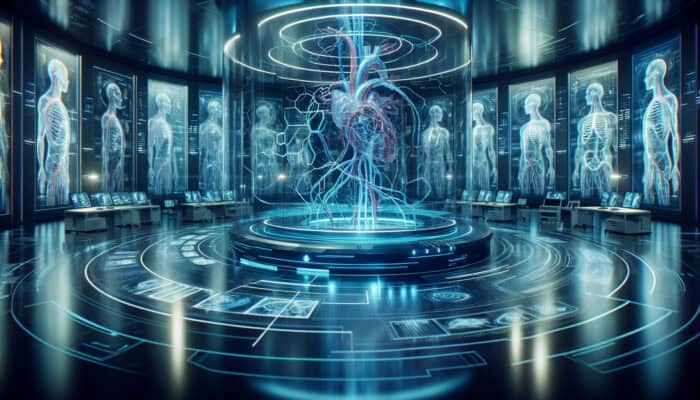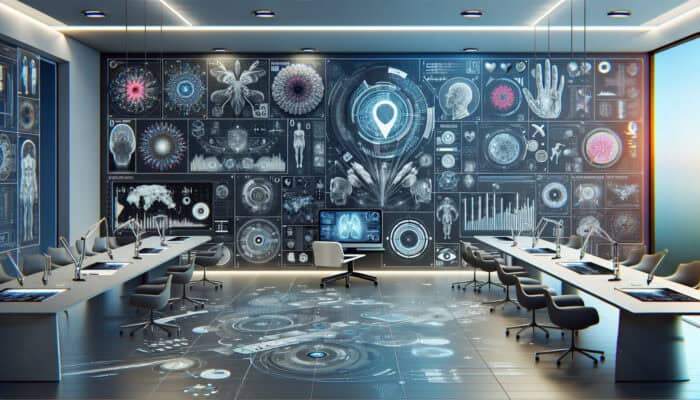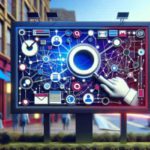Unlock the Secrets to Maximizing Visual Clarity Techniques
Discover Why Clarity Enhancement Techniques Are Essential for Success

Clarity enhancement techniques encompass a range of sophisticated methods that aim to significantly improve visual clarity pertaining to human vas. These innovative techniques are crucial for fostering better perception and interaction with complex structures, and they prove to be invaluable across various environments, including educational institutions and clinical settings. By enhancing visual clarity, these techniques not only promote deeper understanding but also lead to more favorable outcomes in various applications. The key advantages of employing clarity enhancement techniques are as follows:
- Enhanced visual perception of intricate structures.
- Improved learning experiences for both students and professionals.
- Increased accuracy in clinical diagnoses and medical practices.
- Better communication among experts in different fields.
- Heightened user confidence and engagement in interactive scenarios.
By harnessing these techniques, practitioners create environments where clarity is of utmost importance, leading to enhanced effectiveness and improved outcomes in their respective domains.
Core Principles That Drive Effective Clarity Enhancement Techniques
The success of clarity enhancement techniques is anchored in fundamental principles that guide their creation and execution. A comprehensive understanding of these foundational elements is vital for maximizing the benefits these techniques offer. Notable principles include:
- Perceptual clarity: Enhancing the visual presentation of information for better understanding.
- Contextual relevance: Customizing techniques to adapt to specific environments and target audiences.
- Usability: Making sure that techniques are user-friendly and easily accessible.
- Technological integration: Utilizing modern technology to amplify clarity functions.
- Continuous feedback: Modifying techniques based on user experiences and outcomes.
These principles work together to ensure that clarity enhancement techniques are not only effective but also flexible enough to adapt to changing needs and contexts, making them indispensable across a variety of applications.
Tracing the Historical Evolution of Clarity Enhancement Techniques
Examining the historical development of clarity enhancement techniques unveils a compelling story that informs current practices. Over time, these methods have evolved to meet the growing demands across various sectors. Key milestones in their evolution include:
- Early visualisation techniques used in educational and healthcare settings.
- The advent of digital tools that transformed visual clarity.
- Breakthroughs in cognitive psychology that enhance understanding and interaction.
- Integration of augmented reality and virtual reality into clarity enhancement practices.
- A rising emphasis on user-centered design in clarity tool development.
Insights gained from this historical backdrop illuminate contemporary applications and underscore opportunities for future innovations that could further enhance clarity techniques.
Exploring Current Applications of Clarity Enhancement Techniques Across Diverse Fields

Clarity enhancement techniques are presently utilized across a broad spectrum of fields, leading to remarkable advancements in visual clarity and interaction with human vas. These applications highlight the versatility and significance of these techniques in multiple domains. Notable applications include:
- Medical imaging technologies that provide enhanced diagnostic clarity.
- Educational resources specifically tailored to aid in grasping complex concepts.
- Data visualization methods that improve analytical clarity.
- Interactive software designed to boost user engagement.
- Art and design applications where clarity is critical for aesthetic impact.
The extensive application of these techniques underscores their vital role not just in enhancing visual clarity but also in fostering improved communication and engagement across various fields.
Anticipating Future Innovations and Trends in Clarity Enhancement Techniques
The realm of clarity enhancement techniques is on the brink of substantial growth, fueled by technological advancements and a refined understanding of user requirements. Expected trends include:
- Increased reliance on artificial intelligence for customized clarity solutions.
- Further developments in virtual and augmented reality applications.
- Incorporation of neurocognitive research to enhance clarity effectiveness.
- Creation of more inclusive tools designed to cater to diverse user groups.
- Growing emphasis on sustainability and eco-friendly practices in the development of clarity enhancement tools.
These anticipated trends suggest a future where clarity enhancement techniques become even more integral to various sectors, continuously transforming how we engage with complex information.
Expert Insights into Clarity Enhancement Techniques for Human Vas
Real-World Examples of Successful Clarity Enhancement Implementations

Experts frequently highlight successful instances where clarity enhancement techniques have significantly improved visual clarity in human vas. For example, in medical environments, advanced imaging technologies have revolutionized how healthcare professionals view and diagnose vascular conditions, resulting in markedly improved patient outcomes. These instances illustrate the transformative potential of clarity enhancement techniques in practical settings.
Steps for Successful Implementation of Clarity Enhancement Techniques
Industry specialists outline actionable steps that enable users to effectively apply clarity enhancement techniques. Begin by conducting a thorough assessment of the specific needs and challenges of the environment, followed by the selection of appropriate tools and methods that align with those requirements. This thoughtful approach not only ensures optimal implementation but also maximizes the results achieved.
Expert Predictions on Future Trends in Clarity Enhancement
Analyses from experts suggest that future trends in clarity enhancement will focus on leveraging technology to create tailored solutions. Anticipated advancements in artificial intelligence and machine learning will facilitate personalized clarity techniques that adapt to individual user preferences and requirements, thus enhancing overall effectiveness.
Understanding How Clarity Enhancement Techniques Operate Effectively
Mechanisms That Enable Clarity Enhancement Techniques to Work
Grasping the mechanisms through which clarity enhancement techniques function is vital for their effective application. Typically, these techniques operate by reducing cognitive load through clearer visual presentations, allowing users to focus on pertinent information without unnecessary distractions. This methodology promotes more streamlined interactions with intricate content, ultimately improving comprehension.
Key Factors Influencing the Success of Clarity Enhancement Techniques
Several critical factors influence the effectiveness of clarity enhancement techniques, including the quality of visuals utilized, the context in which these techniques are implemented, and the specific methods chosen. Additionally, variations in user engagement and familiarity with the content play a significant role in determining overall effectiveness.
Technological Innovations Shaping Clarity Enhancement Techniques
Recent technological advancements are profoundly influencing the development of new clarity enhancement techniques specifically for human vas. Innovations such as high-definition imaging, real-time data visualization, and interactive platforms empower users to engage with and comprehend visual content more effectively, thereby enhancing overall clarity and understanding.
Significant Advantages of Clarity Enhancement Techniques
Enhancing Visual Perception for Improved Interaction
Clarity enhancement techniques play a crucial role in dramatically improving the visual perception of human vas, which fosters better interaction and understanding. When visual clarity is heightened, users can engage more deeply with the presented information, leading to superior outcomes across a variety of applications and fields.
Long-Term Advantages of Implementing Clarity Enhancement Techniques
Exploring the long-term benefits of clarity enhancement techniques reveals their sustained influence on both individual and organizational levels. Enhanced clarity leads to improved information retention, better decision-making capabilities, and overall higher satisfaction among users, representing a significant benefit in any context where these techniques are applied.
How Clarity Enhancement Techniques Enrich Everyday Experiences
Clarity enhancement techniques significantly improve daily life by enhancing the clarity of human vas, making everyday tasks more manageable and efficient. From clearer navigation systems to user-friendly educational tools, the advantages are extensive and far-reaching, positively impacting numerous aspects of daily living and learning.
Research-Backed Benefits of Clarity Enhancement Techniques for Human Vas
Scientific Evidence Supporting the Efficacy of Clarity Enhancement
Numerous scholarly studies have validated the advantages of clarity enhancement techniques in improving the clarity of human vas. These studies illustrate that these techniques can lead to significant enhancements in user comprehension and interaction, highlighting their vital role across various fields and applications.
Expert Opinions on Research Findings Regarding Clarity Enhancement
Experts frequently discuss the implications of research findings related to clarity enhancement techniques, offering valuable insights into their effectiveness. These discussions emphasize the necessity of ongoing research to refine methodologies and improve outcomes, ensuring that clarity enhancement techniques continue to evolve and adapt.
How Research Can Shape the Future of Clarity Enhancement Techniques
Research plays a pivotal role in guiding the development of future clarity enhancement techniques for human vas. By identifying effective strategies and understanding user needs, research empowers innovators to create tools that are both efficient and user-centric, ensuring that clarity enhancement continues to meet the demands of evolving contexts.
Practical Uses of Clarity Enhancement Techniques in Everyday Life
Typical Applications of Clarity Enhancement Techniques in Daily Activities
Clarity enhancement techniques are widely utilized in daily life to improve the clarity of human vas, which enhances various activities such as learning, navigation, and data analysis. This prevalent use underscores their essential role in contemporary society, demonstrating their importance across diverse settings and applications.
Best Practices for Implementing Clarity Enhancement Techniques
Adopting best practices for implementing clarity enhancement techniques ensures optimal results in improving human vas clarity. These practices involve selecting the most appropriate tools, tailoring approaches to specific contexts, and providing sufficient training for users to maximize their understanding and engagement with the techniques employed.
Customizing Clarity Enhancement Techniques for Diverse Needs
Clarity enhancement techniques can be tailored to address a broad spectrum of user needs, ensuring their effectiveness across various demographics and contexts. The inherent flexibility of these approaches allows practitioners to cater to specific requirements, optimizing the effectiveness of clarity enhancement across numerous settings.
Case Studies Demonstrating Successful Implementation of Clarity Enhancement Techniques
A wealth of case studies illustrates the successful application of clarity enhancement techniques, showcasing their impact on enhancing human vas clarity in real-world scenarios. These examples provide invaluable insights into effective strategies and outcomes, demonstrating the transformative potential of clarity enhancement techniques in practice.
Resources and Tools Available for Enhancing Clarity
A variety of tools and resources are accessible to support the implementation of clarity enhancement techniques, facilitating improved human vas clarity. These resources span from software applications to educational materials, ensuring that users can easily access the necessary tools to enhance clarity both effectively and efficiently.
Challenges Encountered in Implementing Clarity Enhancement Techniques
Identifying Technical Challenges in Implementation
Technical challenges faced during the implementation of clarity enhancement techniques can significantly affect their overall success. These hurdles may include limitations in available technology, compatibility issues with existing systems, and the necessity for specialized training or skills to effectively utilize the techniques.
Common Barriers to the Adoption of Clarity Enhancement Techniques
Several prevalent obstacles hinder the adoption of clarity enhancement techniques, including financial limitations, accessibility concerns, and resistance from users who may be unfamiliar with new technologies. Addressing these barriers is essential for ensuring widespread implementation and maximizing the benefits that clarity enhancement can offer.
Strategies for Overcoming Implementation Challenges
Successfully addressing challenges related to the implementation of clarity enhancement techniques necessitates innovative solutions and ongoing efforts. Effective strategies may involve offering comprehensive training resources, advocating for necessary funding, and highlighting the tangible advantages of these techniques to encourage acceptance among potential users.
Proven Approaches for Enhancing Clarity in Human Vas
Established Strategies for Improving Clarity
Established strategies for enhancing the clarity of human vas have emerged from extensive research and practical applications. These strategies prioritize user engagement, adapt techniques to specific contexts, and integrate technology to maximize clarity and effectiveness in presentations.
Identifying the Most Effective Techniques for Clarity Enhancement
Recognizing the most effective clarity enhancement techniques can greatly assist users in achieving optimal results in enhancing human vas clarity. Techniques that emphasize visualization, interactivity, and user feedback consistently yield superior outcomes, making them excellent choices for practitioners seeking to enhance clarity.
Ensuring the Reliability of Clarity Enhancement Techniques
Guaranteeing the reliability of clarity enhancement techniques is crucial for their successful implementation. Users can accomplish this by selecting methods supported by comprehensive research, continually assessing their effectiveness, and being open to modifications based on user feedback, thereby fostering a culture of continuous improvement.
Evaluating the Effectiveness of Clarity Enhancement Techniques
Evaluating the success of clarity enhancement techniques is critical for the ongoing improvement and optimization of human vas clarity. Metrics for success may include user satisfaction surveys, performance evaluations, and comparative studies analyzing clarity both before and after the implementation of specific techniques.
Future Directions for Clarity Enhancement Techniques
Emerging Trends in Clarity Enhancement Techniques
Emerging trends in clarity enhancement techniques offer exciting possibilities for further improving human vas clarity. Trends such as gamification, personalized learning experiences, and advanced data analytics are poised to enhance user engagement and understanding, marking a significant shift in how clarity can be achieved.
Expected Innovations in Clarity Enhancement Techniques
Anticipated innovations in clarity enhancement techniques promise to revolutionize the methods we use to improve human vas clarity. Expected advancements include enhancements in machine learning algorithms and augmented reality tools, which will facilitate unprecedented levels of engagement and comprehension, transforming how information is presented and interpreted.
The Continuous Evolution of Clarity Enhancement Techniques Over Time
The evolution of clarity enhancement techniques will consistently be driven by technological advancements and the changing needs of users. As new challenges emerge, the ability to adapt and innovate will be essential in maintaining the effectiveness of clarity enhancement methods, ensuring they remain relevant and impactful.
Addressing Frequently Asked Questions About Clarity Enhancement Techniques
What are clarity enhancement techniques?
Clarity enhancement techniques refer to a diverse array of methods designed to significantly elevate the visual clarity of human vas, facilitating improved perception and interaction across numerous fields and applications.
How do clarity enhancement techniques operate?
These techniques operate by enhancing visual presentations, minimizing cognitive load, and allowing users to concentrate on relevant information without distractions, which results in more effective engagement with complex content.
What are the primary benefits of clarity enhancement techniques?
Primary benefits encompass improved visual perception, enhanced learning experiences, greater diagnostic accuracy, and improved communication among users and professionals across various fields.
What factors influence the effectiveness of clarity enhancement techniques?
The effectiveness of these techniques can be shaped by several critical factors, including the quality of visuals, the contexts in which they are applied, the specific techniques employed, and the levels of user engagement and familiarity with the content.
Can clarity enhancement techniques be customized for different user needs?
Absolutely, these techniques can be personalized and adapted to cater to the diverse needs of various user groups, significantly enhancing their overall effectiveness and impact.
What are common applications of clarity enhancement techniques?
Common applications include medical imaging, educational tools, data visualization methods, and interactive software designed to boost user engagement and understanding.
What barriers exist to the adoption of clarity enhancement techniques?
Barriers to the adoption of these techniques often include financial limitations, accessibility challenges, and resistance from users who may be unfamiliar with new technologies.
How can users ensure the reliability of clarity enhancement techniques?
Users can ensure the reliability of these techniques by selecting methods that are supported by research, continually assessing their efficacy, and adapting techniques based on user feedback to optimize outcomes.
What future trends are expected in clarity enhancement techniques?
Emerging trends include increased utilization of artificial intelligence, advancements in augmented reality and virtual reality, as well as a focus on personalized user experiences that cater to specific needs.
How can the success of clarity enhancement techniques be measured?
Success can be measured through user satisfaction surveys, performance assessments, and comparative analyses of clarity before and after the implementation of specific techniques, ensuring ongoing improvement and optimization.
Explore more content on our YouTube channel!
The article Clarity Enhancement Techniques for Human Vas: Universal Strategies was first published on: https://vagods.co.uk
The article Clarity Enhancement Techniques for Human Visuals: Universal Tips was found on https://limitsofstrategy.com

